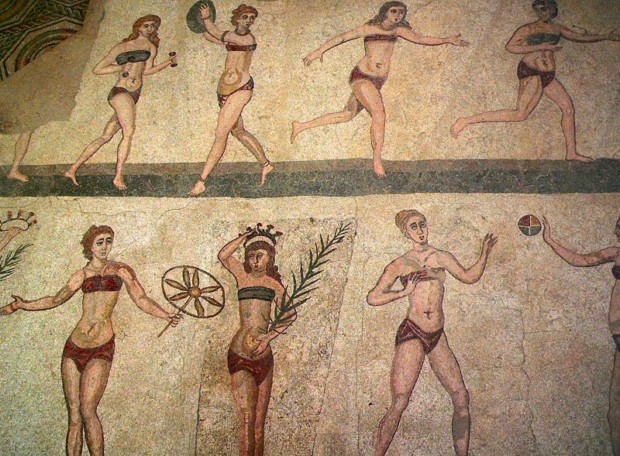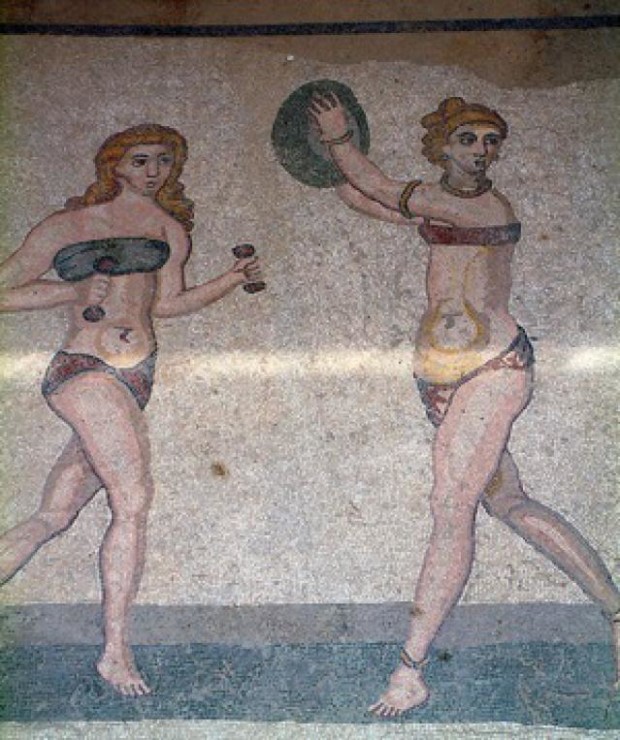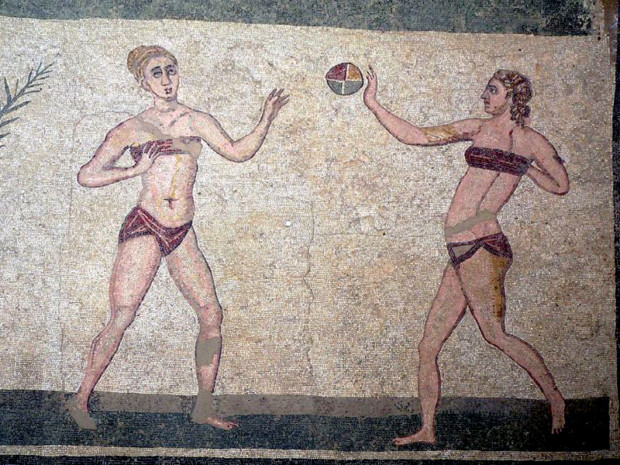The Evolution of Art During the Fall of Rome
The Fall of the Roman Empire in the 5th century CE was a pivotal moment in history, signifying the end of a dominant civilization that had reigned...
Maya M. Tola 16 October 2023
If you have ever wondered when the history of the bikini began, it started at the same time and place in history as philosophy, mathematics, and art: with the ancient! The Roman mosaics found in Sicily prove that beauty standards of fit bodies started long before “training with Jane Fonda” or cheerleading were invented. And since beauty standards always change, it is much more important to have fun and enjoy life in your own body and these ancient bikini girls seem to have a lot of fun spending a sunny day at the beach!

The mosaic christened “Ancient Bikini Girls“, was found by an archeological excavation of the ancient Roman villa near Piazza Armerina in Sicily. It may have been made in the 4th century CE by North African artists since some of the tesserae (the pieces of the mosaic) come from Africa. It clearly shows the athletic activities that women could participate in. Additionally, it also shows what kind of rewards they received for the best performance: a palm of victory and a crown.

Just look closer at these fantastic women! Their exercises are no different from ours! Running, playing with a ball, or lifting hand weights. Their slim and firm bodies seem to be taken straight from our health and sports magazines. Curiously, the depictions might have possibly been idealized, which shows what the ideal of beauty was like back then. That is to say, well-muscled legs and arms, broad hips, and small feet. And, obviously, jewelry and hairdos!

The precursor of the bikini was a band called strophium (or fascia, fasciola, taenia, and mamillare). It was probably a long piece of cotton or linen cloth wrapped around the breasts to hold them or even compress them. It was a typical item in female underwear. The bottom, however, was not a normal element of underwear for the Roman citizen. Called a subligar, it was worn by athletes or slaves.
DailyArt Magazine needs your support. Every contribution, however big or small, is very valuable for our future. Thanks to it, we will be able to sustain and grow the Magazine. Thank you for your help!